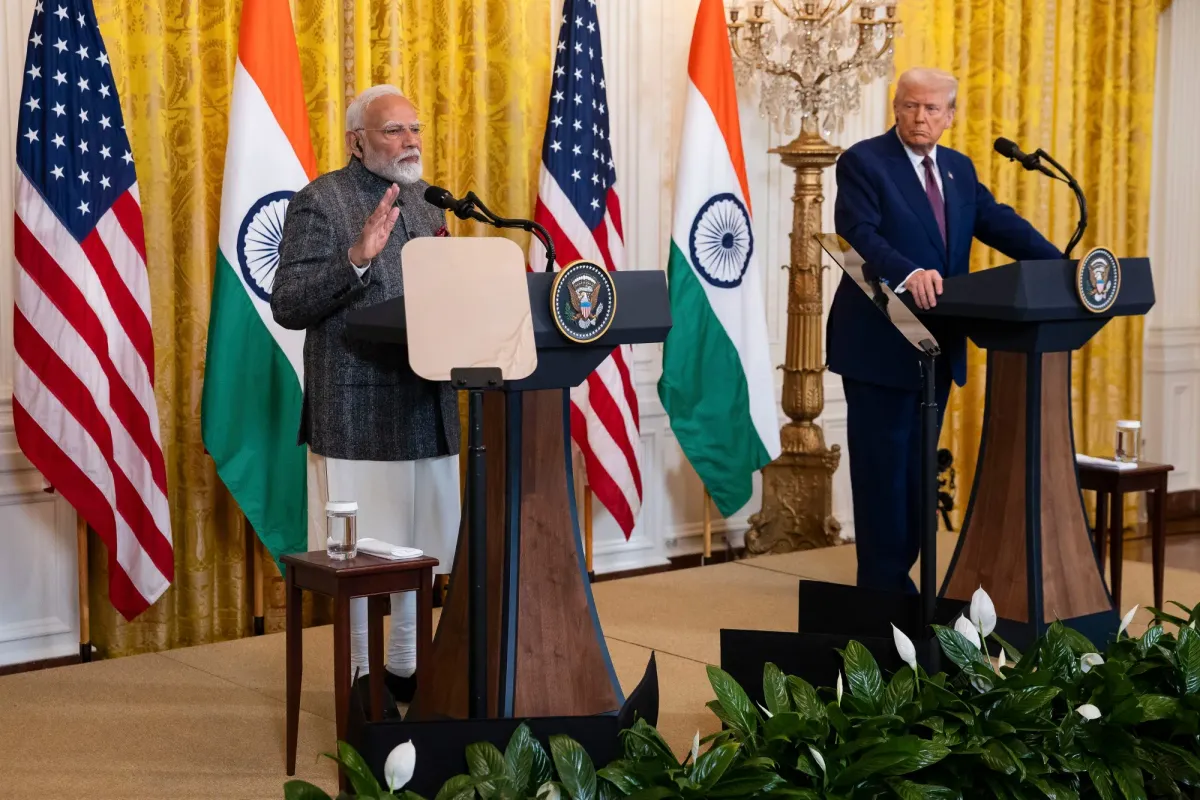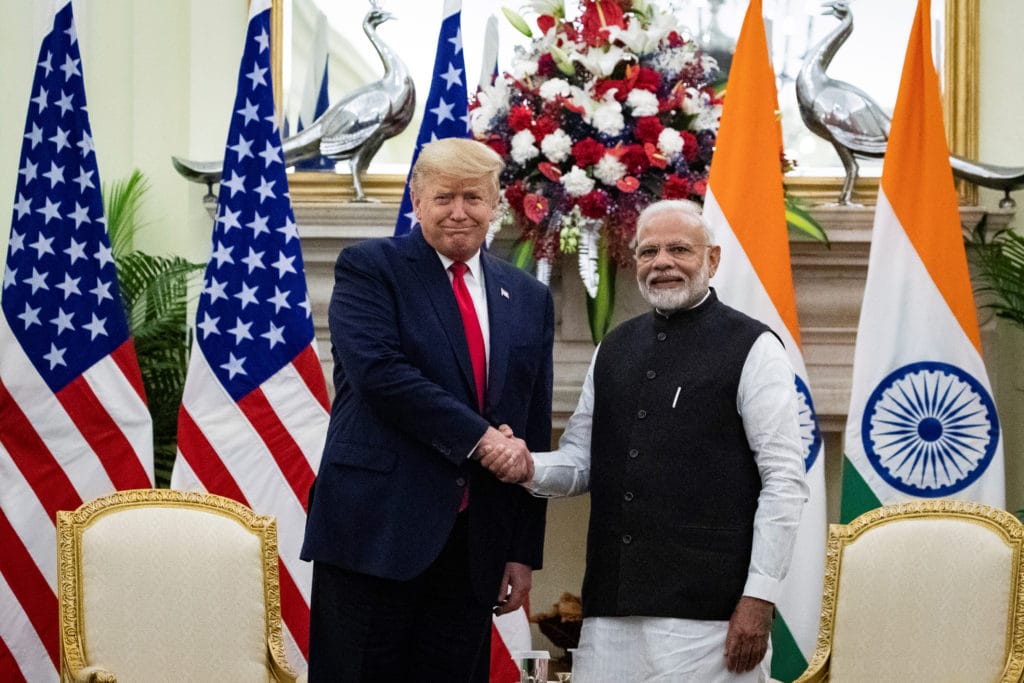Trump Teases ‘Very Big’ US–India Trade Deal Building on China Breakthrough
Trump hints at a major US–India trade deal after sealing a rare-earth pact with China. With the July 9 tariff deadline approaching, both nations are rushing to resolve trade barriers in agriculture, steel, and tech. Will this be a turning point in US–India economic ties?

WASHINGTON / NEW DELHI, June 27, 2025
Opening Flashpoint
President Trump's announcement of a rare-earth trade agreement with China sent ripples through global markets. Then came the real surprise: his casual mention of a potential “very big” trade deal with India. With a July 9 tariff deadline approaching, this hint sets the stage for a crucial negotiation that could change economic and geopolitical paths.
The Rare-Earth Breakthrough and Its Ripple Effects
On June 26, Trump confirmed that the U.S. signed an agreement with Beijing focused on speeding up rare-earth exports. This move restarts the flow of essential materials to American industries affected by China’s earlier restrictions.
Reuters noted the deal builds on the Geneva framework, where China agreed to remove non-tariff barriers and streamline rare-earth shipment licensing. A senior White House official shared that the U.S. and China reached an understanding on how to expedite these shipments back to the U.S.
Commerce Secretary Howard Lutnick warned that once this supply resumes, countermeasures will decrease. This signals a timeline for easing U.S.–China economic tensions.
This rare-earth deal isn’t just another trade agreement; it’s a key move aimed at breaking China’s grip on important materials vital for tech, defense, and green energy. Market watchers believe it creates a model: fix the bottlenecks first, then expand the deal.
When “Maybe with India” Becomes a Wild Card
At the same White House event, Trump turned to India:
“We just signed with China yesterday. We have one coming up, maybe with India. A very big one. Where we’re going to open up India…”
Multiple sources reported this statement, noting that while Trump didn’t provide details, his tone suggested a potentially bigger deal than with China. Economic Times highlighted that Indian officials framed the future pact as “fair, balanced, and mutually beneficial,” possibly borrowing strategic elements from China.

The Current State of Play: Negotiation or Standoff?
Negotiations between the U.S. and India are both energized and tense:
India’s stance:
- Senior trade ministry sources assert they are “keen, but not desperate” to strike a deal before July 9.
- Proposals include rolling back tariffs on almonds, pistachios, and walnuts, and increasing access to sectors like energy, autos, and defense.
- They emphasize prioritizing “national interest,” focusing on Indian farmers and strategic autonomy.
U.S. demands:
- The White House is pushing for significant cuts in Indian tariffs on soybeans, corn, cars, and liquor, as well as the removal of non-tariff barriers.
- Earlier, India suggested a zero-for-zero tariff offer on auto parts, with restrictions on steel, following proposals from February.
- However, discussions have slowed as negotiators tackle complex proposals and technical details.
Diplomatic pressure:
- With the July 9 deadline resembling a trigger for Trump’s 26% reciprocal tariffs on India (and others), negotiations have taken on a sense of urgency.
- White House Press Secretary Karoline Leavitt acknowledged that the date isn’t “critical,” indicating a possible extension but without guarantees.
- Markets remain cautious, as Axios highlighted that while Trump’s timelines have shifted in the past, uncertainty persists.
Inside the Deal: Sectors, Sore Points, and Strategic Stakes
Agricultural Market Access
India's wheat, dairy, corn, soy, and apple sectors are highly protected. Opening them could disrupt millions of small farmers. Meanwhile, India's imports of U.S. soybean oil and crude oil have recently risen, suggesting gradual openings.
Auto & Steel Tariffs
U.S. negotiators are focusing on India’s high tariffs on auto parts and steel. India had offered zero-for-zero tariffs on auto parts, but conversations have yet to solidify.
Non-Tariff Measures
U.S. teams have flagged India's complex clearance processes for food, liquor, defense items, and data transfers. These regulatory barriers are often more challenging to address than simple tariff issues.
Rare-Earth & Supply Chain Strategy
Though not officially linked, the rare-earth deal with China provides a model: secure strategic resources first, then broaden trade. A future agreement with India could follow this format, possibly including energy, defense tech, and semiconductors.
Bigger Picture: Why This Deal Matters Beyond Economics
Supply-Chain Diversification
U.S. companies are moving away from China. India offers manufacturing scale and demographic advantages in sectors like pharmaceuticals, defense manufacturing, solar energy, and digital services. A deal could strengthen this trend.
Geopolitical Stakes
A trade deal with India supports the Quad strategy and diminishes China's economic influence. Modi and Trump have promoted “Mission 500” to double trade to $500 billion by 2030—a deal would be a significant initial step.
Political Arithmetic
Both Trump and Modi face pressure from domestic constituents. U.S. farmers and manufacturers want more access, while Indian small farmers worry about competition. Any deal will likely require custom exemptions and gradual rollouts.
Precedent for Global Trade Strategy
Trump's strategy has shifted from broad tariff battles to focused, large strategic deals, as seen with the U.K., China, and potentially India. This signals a new approach for bilateral negotiations.

Critical Dates & Moves Ahead
- July 9: The tariff pause ends, leading to either an extension or enforcement.
Early July: An Indian delegation is set to arrive in Washington for intensive negotiations. - July–September: There may be a series of interim fixes before a comprehensive trade agreement is finalized, covering services, intellectual property, digital services, investment, and clean energy.
- Autumn 2025: Deadline to finalize the comprehensive pact and commit to the “Mission 500” trading landscape.
- 2026 onward: Potential development of trilateral frameworks—could there be a Quad-plus trade framework?
From Flashpoint to Framework
- Negotiation sprint: Diplomats are racing against time with focused breakout groups on agriculture, autos, rare minerals, digital flows, and defense procurement.
- Tariff ceasefire tactics: A phased removal of the 26% steel and auto duties in exchange for Indian protections for sensitive sectors is possible.
- Selective pilot openings: Look for special provisions for soybean oil, almonds, and defense-tech pilot licenses.
- Full roadmap: If interim results satisfy both sides, trade teams will move on to draft chapters for a comprehensive 10 to 12-chapter trade agreement.
Final Word: Strategic Ambitions on the Clock
Trump's rare-earth deal with China was a critical first step. Now, the focus shifts to India. Successfully resolving negotiations by July 9 could redefine his trade approach, moving from selective conflict to strategic cooperation. For India, this is both a chance and a risk: connecting with the world’s largest economy, or jeopardizing local interests.
Conversely, failure could lead to reciprocal tariffs, increased U.S.–India trade tensions, and a ripple effect on global markets. What happens next might have lasting impacts on diplomacy, defense, economics, and domestic politics for years to come.
Can Bold Vision Outweigh Domestic Pressure?
Can the U.S. and India balance strategic goals and domestic concerns to strike a “very big” deal, or will the July 9 deadline disrupt progress before negotiations really begin?
Sources
- Trade negotiations & policy: USTR official statements; Ministry of Commerce & Industry (India), June 2025 press briefings; U.S. Trade Representative Office archives.
- China rare-earth deal details: Bloomberg News, June 26 analysis; AP News report on Trump’s press conference; Reuters briefing on China-U.S. critical minerals agreement.
- India–U.S. relations timeline: Press Information Bureau (PIB India); U.S. Department of State bilateral trade factsheet; Google Trends tracking on “Trump India trade deal.”
- News analysis: Reuters, AP, The Hindu BusinessLine, Economic Times, Bloomberg, Financial Express
- Public sentiment & commentary: Tweets from @dhume (Sadanand Dhume) and @MohanKIndia; Reddit discussions in r/IndiaSpeaks and r/Geopolitics (archived June 2025); LinkedIn commentary from India-U.S. Business Council (USIBC).
- Media Insights: PBS NewsHour / White House Photo Office, AP News, Bloomberg, Financial Express
- Legal frameworks & trade policy tools: Justia trade law archive; Cornell Law – International Trade & Tariffs section; Wayback Machine snapshots of June 2024 Indo-Pacific Trade Agreement drafts




